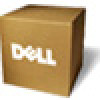Dell Broadcom NetXtreme Family of Adapters Broadcom NetXtreme 57XX User Guide - Page 157
Teaming and Clustering
 |
View all Dell Broadcom NetXtreme Family of Adapters manuals
Add to My Manuals
Save this manual to your list of manuals |
Page 157 highlights
Teaming and Network Backup Teaming and Clustering Microsoft Cluster Software High-Performance Computing Cluster Microsoft Cluster Software Dell Server cluster solutions integrate Microsoft Cluster Services (MSCS) with PowerVault SCSI or Dell/EMC Fibre-Channel based storage, Dell servers, storage adapters, storage switches and network adapters to provide high-availability (HA) solutions. HA clustering supports all adapters qualified on a supported Dell server. If you are using Windows Server 2003, MSCS clusters support up to eight nodes. In each cluster node, it is strongly recommended that customers install at least two network adapters (on-board adapters are acceptable). These interfaces serve two purposes. One adapter is used exclusively for intra-cluster heartbeat communications. This is referred to as the private adapter and usually resides on a separate private subnetwork. The other adapter is used for client communications and is referred to as the public adapter. Multiple adapters may be used for each of these purposes: private, intracluster communications and public, external client communications. All Broadcom teaming modes are supported with Microsoft Cluster Software for the public adapter only. Private network adapter teaming is not supported. Microsoft indicates that the use of teaming on the private interconnect of a server cluster is not supported because of delays that could possibly occur in the transmission and receipt of heartbeat packets between the nodes. For best results, when you want redundancy for the private interconnect, disable teaming and use the available ports to form a second private interconnect. This achieves the same end result and provides dual, robust communication paths for the nodes to communicate over. For teaming in a clustered environment, customers are recommended to use the same brand of adapters. Figure 7 shows a 2-node Fibre-Channel cluster with three network interfaces per cluster node: one private and two public. On each node, the two public adapters are teamed, and the private adapter is not. Teaming is supported across the same switch or across two switches. Figure 8 shows the same 2-node Fibre-Channel cluster in this configuration. Figure 7. Clustering With Teaming Across One Switch















